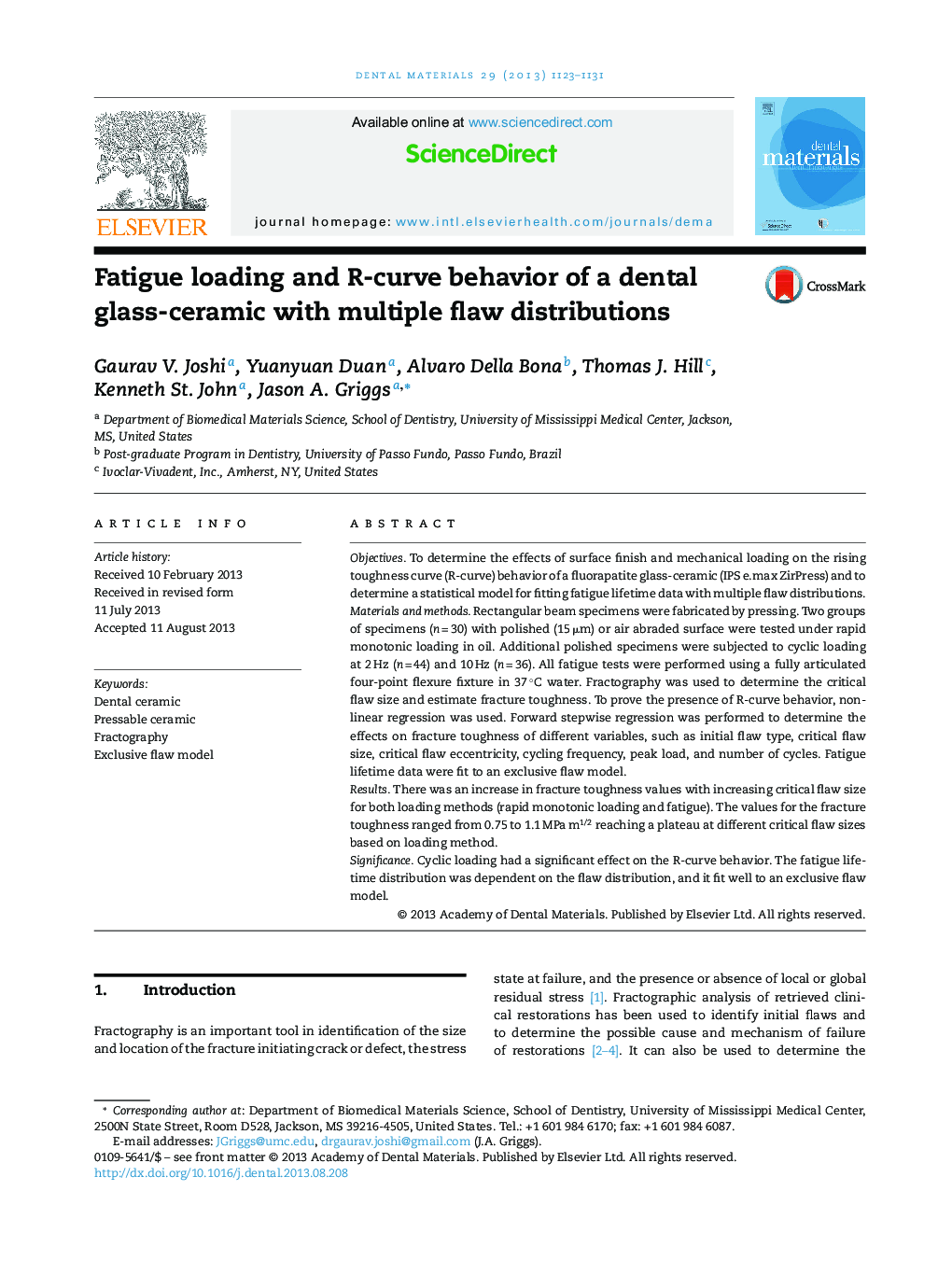| Article ID | Journal | Published Year | Pages | File Type |
|---|---|---|---|---|
| 1421150 | Dental Materials | 2013 | 9 Pages |
ObjectivesTo determine the effects of surface finish and mechanical loading on the rising toughness curve (R-curve) behavior of a fluorapatite glass-ceramic (IPS e.max ZirPress) and to determine a statistical model for fitting fatigue lifetime data with multiple flaw distributions.Materials and methodsRectangular beam specimens were fabricated by pressing. Two groups of specimens (n = 30) with polished (15 μm) or air abraded surface were tested under rapid monotonic loading in oil. Additional polished specimens were subjected to cyclic loading at 2 Hz (n = 44) and 10 Hz (n = 36). All fatigue tests were performed using a fully articulated four-point flexure fixture in 37 °C water. Fractography was used to determine the critical flaw size and estimate fracture toughness. To prove the presence of R-curve behavior, non-linear regression was used. Forward stepwise regression was performed to determine the effects on fracture toughness of different variables, such as initial flaw type, critical flaw size, critical flaw eccentricity, cycling frequency, peak load, and number of cycles. Fatigue lifetime data were fit to an exclusive flaw model.ResultsThere was an increase in fracture toughness values with increasing critical flaw size for both loading methods (rapid monotonic loading and fatigue). The values for the fracture toughness ranged from 0.75 to 1.1 MPa m1/2 reaching a plateau at different critical flaw sizes based on loading method.SignificanceCyclic loading had a significant effect on the R-curve behavior. The fatigue lifetime distribution was dependent on the flaw distribution, and it fit well to an exclusive flaw model.
